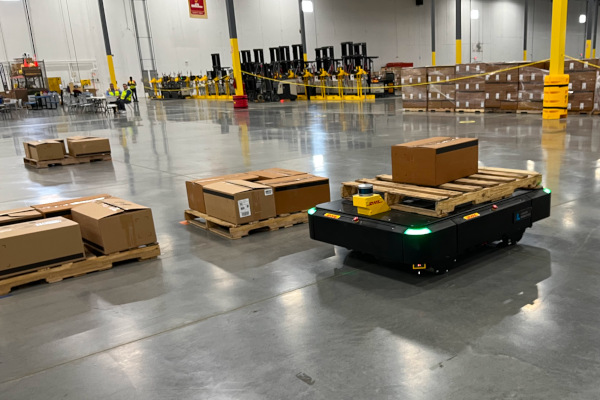Drones are big business today, but they may not compare to mobile robots over the next few years.
Mobile robots, including autonomous mobile robots (AMRs) commonly found on warehouse floors, swarming robotics and smart robots, will lead the way according to Gartner’s recent report, Hype Cycle for Mobile Robots and Drones, 2023.
Gartner’s research found that many organizations using mobile robots are expected to expand their fleets over the next three years as they battle rising labor challenges and high impact technologies mature, allowing for the creation of an accelerated market in need of “smart, autonomous and mobile robots and drones.”
Conversely, the hype cycle report said that drones will be utilized in more targeted ways, such as inspection drones or delivery drones in remote areas.
“By 2027, over 75% of companies will have adopted some form of cyber-physical automation within their warehouse operations,” said Dwight Klappich, vice president and fellow in Gartner’s Supply Chain Practice. “Labor shortages and challenges retaining talent, coupled with technology advances such as machine learning and AI, will continue to drive adoption of smart robots.”
A recent Autonomous Mobile Robot Market report from Research Reports World predicts a 33.11% compound annual growth rate for AMRs through 2030, reaching a market valuation of $8.4 billion, up from $1.5 billion in 2021.
Gartner’s hype cycle also identifies several other technologies that are rated as “transformational,” including machine learning (ML). ML should hit mainstream adoption within the next five years, Gartner predicts.
Autonomous trucks and personal robots are also on the hype cycle, but are listed as having a greater than 10-year timeline to reach the plateau. Swarming robots, picking robots, AMRs, robotic goods-to-person systems, light-cargo delivery drones, robotic cube storage systems, and light-cargo delivery robots are listed in the two- to five-year target range.
Indoor flying drones, smart robots, mobile sortation robots, warehouse picking robots, autonomous vehicles (private road networks), lighter-than-air communications platforms, multiagent orchestration platforms (MAO), and autonomous vehicles, fall into the 5- to 10-year timeline for plateau.
MAO platforms will become increasingly important, Gartner noted, as companies deploy robotics from various vendors, increasing the need for a single system to quickly onboard and integrate new robots.

(Source: Gartner Supply Chain Practice)
“In the past year, we’ve seen increased interest in smart robots and MAO platforms as companies are looking to further improve logistic operations, support automation and augment humans in various jobs,” Klappich noted. “Rapidly emerging and evolving technologies, like MAO, will enable organizations to leverage heterogeneous fleets of mobile robots to assist with more complex activities, delivering cost savings and productivity benefits.”
SC
MR


More Robotics
- Robotic use grows by 10%
- The art of winning at supply chain technology: Lessons from managing tech for the largest private trucking fleet in the U.S.
- NextGen Supply Chain Conference set for October 21-23
- Estée Lauder, Schneider Electric and S&S Activewear to receive NextGen End User awards
- 2024 Robotics Application Conference announces session, speaker lineup
- NextGen Supply Chain Conference announces Solution Provider Award winners
- More Robotics
Latest Podcast

 Explore
Explore
Software & Technology News
- How technological innovation is paving the way for a carbon-free future in logistics and supply chains
- Körber Supply Chain Software’s Craig Moore says MercuryGate acquisition is about the customer
- Robotic use grows by 10%
- Harnessing Edge Computing and AI Vision Systems for Real-Time Logistics Insights
- The art of winning at supply chain technology: Lessons from managing tech for the largest private trucking fleet in the U.S.
- The 3 types of cyberattacks affecting global supply chains
- More Software & Technology
Latest Software & Technology Resources

Subscribe

Supply Chain Management Review delivers the best industry content.

Editors’ Picks




